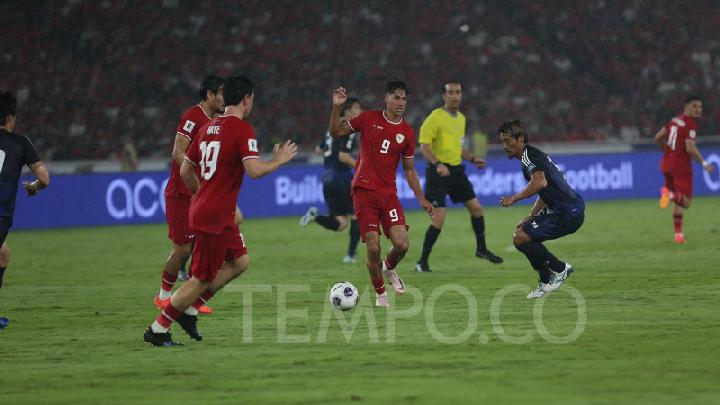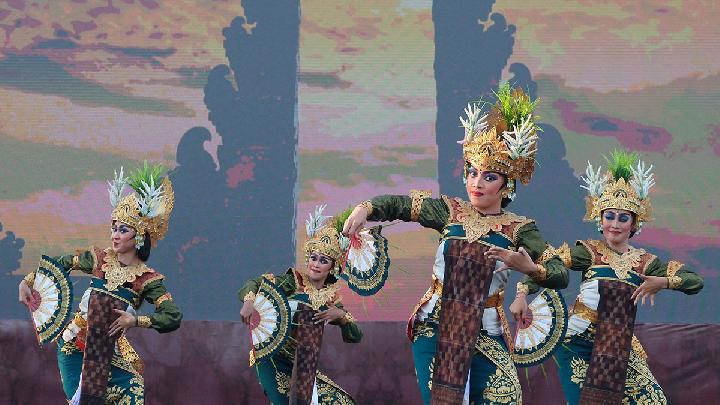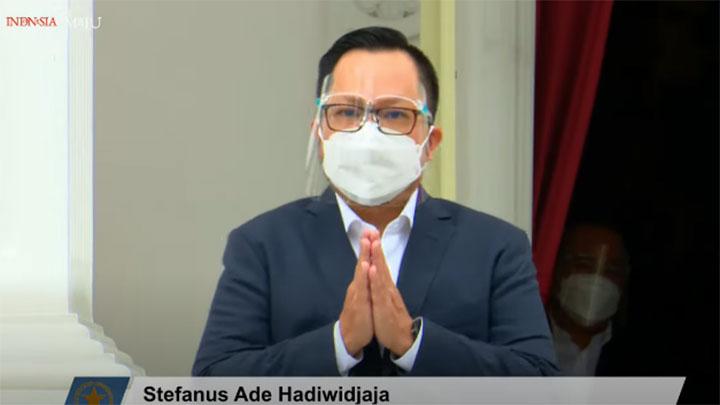TEMPO.CO, Jakarta - The establishment of the National Commission on Human Rights (Komnas HAM) was carried out after a series of lengthy processes. Until finally, on June 7, 1993, through Presidential Decree Number 50 of 1993, the Indonesian government established an independent body specifically tasked with dealing with the issue of individual human rights.
In its historical records, the issue of human rights became the subject of constructive arguments at the beginning of Indonesia's independence. Debates regarding human rights had emerged in the sessions of the Investigating Committee for Preparatory Work for Indonesian Independence (BPUPKI) that would be included in the Constitution (UUD) of 1945, but encountered pros and cons. The opposing side, represented by Sukarno and Soepomo, viewed human rights as a concept of individualism and liberalism, while Indonesia is based on mutual cooperation and kinship. As a result, human rights conflicted with Indonesia's 1945 Constitution.
On the other hand, the pro-group, represented by Mohammad Hatta and Moh. Yamin, argued that human rights must be included in the 1945 Constitution to prevent Indonesia from becoming a power state.
As cited from the official website of Komnas HAM, the debates resulted in a compromise to include human rights in the body of the 1945 Constitution, namely Article 27 regarding equality before the law and government, Article 28 regarding the right to assemble and associate, Article 29 regarding freedom of religion, and Article 31 regarding the right to education.
Forty-eight years later, efforts to respect and uphold human rights were truly realized with the issuance of Presidential Decree (Keppres) Number 50 of 1993 concerning Komnas HAM on June 7, 1993. This decree also became the official day of the establishment of the National Commission on Human Rights or Komnas HAM in Indonesia. The establishment of Komnas HAM was further strengthened by the enactment of Law Number 39 of 1999 concerning Human Rights on September 23, 1999.
Furthermore, the establishment of Komnas HAM was a follow-up to the recommendations of the Human Rights Workshop initiated by the Indonesian Ministry of Foreign Affairs and the United Nations in January 1991 in Jakarta.
In carrying out its work, Komnas HAM uses both national and international human rights instruments as references. Komnas HAM is also equipped with two supporting bodies, namely the Plenary Session and the Sub-Commission.
The Plenary Session is the highest authority within Komnas HAM and consists of all members of Komnas HAM. Meanwhile, the Sub-Commission is a part of Komnas HAM that focuses on specific matters, such as education and dissemination, human rights instrument assessment, and monitoring of human rights implementation.
Functions and Duties of Komnas HAM
Based on Article 75 of the Law on Human Rights, Komnas HAM was established to develop a conducive environment for the implementation of human rights in accordance with Pancasila, the 1945 Constitution, and the UN Charter and the Universal Declaration of Human Rights. Secondly, to enhance the protection and enforcement of human rights for the full development of the Indonesian human individual and their ability to participate in various aspects of life.
As quoted from the Komnas HAM website, referring to Article 1 paragraph 7 of Law Number 39 of 1999, Komnas HAM, as an independent institution with a status equal to other state institutions, is tasked with conducting assessments, research, dissemination, monitoring, and mediation of human rights.
To elaborate further on the functions and authorities of Komnas HAM, as cited from its official website, Komnas HAM is authorized to investigate serious human rights violations based on Law Number 26 of 2000 concerning Human Rights Courts. During investigations, Komnas HAM can form an ad hoc team consisting of the Human Rights Commission and community elements.
According to Law Number 40 of 2008 concerning the Elimination of Racial and Ethnic Discrimination, Komnas HAM also has the authority to conduct supervision. This surveillance aims to evaluate government policies, both at the central and regional levels, carried out periodically or incidentally, by monitoring, gathering facts, assessing whether there is racial and ethnic discrimination, and issuing recommendations.
In addition, Komnas HAM also has other functions and authorities. Summarized from the National Commission on Human Rights of the Republic of Indonesia Regulation Number 2 of 2019 Concerning the Rules of Procedure of the National Commission on Human Rights, here are other functions of Komnas HAM.
Research and Study Function
Article 6 of the Komnas HAM Regulation Number 2 of 2019 stipulates that Komnas HAM, in carrying out its research and study function, is tasked and authorized to conduct studies and research on various international human rights instruments with the aim of providing recommendations regarding the possibility of accession or ratification. It also includes studying various laws and regulations to provide recommendations on the establishment, amendment, and revocation of human rights-related laws and regulations.
Education Function
Komnas HAM, as stipulated in Article 7, is responsible for disseminating knowledge about human rights to the Indonesian public, increasing public awareness about human rights through formal and non-formal educational institutions, and various other sectors. It also collaborates with organizations, institutions, or other parties, nationally, regionally, and internationally, in the field of human rights.
Monitoring Function
Article 8 regulates Komnas HAM in carrying out its monitoring function, tasked and authorized to carry out:
- Observation of the implementation of human rights and the preparation of observation reports.
- Investigation and examination of events in society suspected of human rights violations based on the nature or scope of the events.
- Summons to complainants or victims and the accused parties to provide and hear their testimony.
- Summons witnesses to provide oral and written testimony, and requires complainant witnesses to submit the necessary evidence.
- Site inspections where necessary.
- Summons to relevant parties to provide testimony, orally or in writing, or submit original documents with the consent of the court chairman.
- On-site investigation of houses, yards, buildings, and other premises occupied or owned by specific parties with the consent of the court chairman.
- Providing opinions with the consent of the court chairman on specific cases under trial, if there is a public human rights violation issue, and the court must notify the parties of the Komnas HAM's statements.
Mediation Function
Article 9 regulates Komnas HAM in carrying out its mediation function, tasked and authorized to:
- Facilitate reconciliation between both parties
- Settle disputes through consultations, negotiations, mediations, conciliations, and expert assessments
- Provide recommendations for the parties to settle disputes through the court
- Submit recommendations to the government for action on cases of human rights violations for resolution
- Submit recommendations to the Indonesian House of Representatives for follow-up action on specific cases of human rights violations.
Khumar Mahendra, Eiben Heizier, Gerin Rio Pranata, and Rachel Farahdiba Regar contributed to the writing of this article.
Editor's Choice: Komnas HAM Deplores Detikcom's Deletion of Opinion Piece as Author Claims Intimidation
Click here to get the latest news updates from Tempo on Google News































:strip_icc():format(jpeg)/kly-media-production/medias/3977835/original/066021800_1648524608-pexels-ahmed-aqtai-2233416_1_.jpg)
:strip_icc():format(jpeg)/kly-media-production/medias/3449231/original/035609000_1620241432-000_99C2L3.jpg)
:strip_icc():format(jpeg)/kly-media-production/medias/4779768/original/056174500_1711004488-hands-holding-knife-fork-alarm-clock-plate-blue-background.jpg)
:strip_icc():format(jpeg)/kly-media-production/medias/5134530/original/076641900_1739622826-20250215-Prabowo-AFP_7.jpg)
:strip_icc():format(jpeg)/kly-media-production/medias/4678420/original/041411600_1701993066-pexels-thirdman-8489077.jpg)
:strip_icc():format(jpeg)/kly-media-production/medias/3626995/original/056226000_1636431538-252444828_305857281141144_6357930935168472204_n.jpg)
:strip_icc():format(jpeg)/kly-media-production/medias/1619105/original/061499300_1496997418-ramadan-main.jpg)
:strip_icc():format(jpeg)/kly-media-production/medias/3508689/original/070798000_1626139545-20210713-Elon-Musk-SolarCity-5.jpg)
:strip_icc():format(jpeg)/kly-media-production/medias/4769102/original/014075000_1710171937-20240311-Taraweh_Pertama_di_Istiqlal-ANG_1.jpg)
:strip_icc():format(jpeg)/kly-media-production/medias/5106410/original/089112900_1737608852-Buya_Yahya.jpg)
:strip_icc():format(jpeg):watermark(kly-media-production/assets/images/watermarks/liputan6/watermark-color-landscape-new.png,1100,20,0)/kly-media-production/medias/5140628/original/019242500_1740225866-Persita_Tangerang_vs_Borneo_FC-35.jpg)
:strip_icc():format(jpeg)/kly-media-production/medias/3902213/original/084057500_1642045386-pexels-ralph-w-lambrecht-1446076__1_.jpg)
:strip_icc():format(jpeg)/kly-media-production/medias/4878826/original/064720000_1719661833-WhatsApp_Image_2024-06-28_at_23.09.07.jpeg)
:strip_icc():format(jpeg)/kly-media-production/medias/5141412/original/005545700_1740364919-Snapinsta.app_481203089_18446336839077229_3957692586101845976_n_1080.jpg)
:strip_icc():format(jpeg)/kly-media-production/medias/771429/original/006248600_1416892825-m2.jpg)
:strip_icc():format(jpeg)/kly-media-production/medias/2265569/original/050855900_1530514161-20180702-Harga-Pertamax-Naik-di-Semua-Daerah--TALLO-4.jpg)
:strip_icc():format(jpeg)/kly-media-production/medias/2240997/original/070157500_1528277766-arches-architecture-building-460680.jpg)
:strip_icc():format(jpeg)/kly-media-production/medias/5097271/original/033768400_1737073765-cek_fakta_ganyang.jpg)
:strip_icc():format(jpeg)/kly-media-production/medias/4787912/original/016408900_1711630423-20240328-Penukaran_Uang-AFP_6.jpg)
:strip_icc():format(jpeg)/kly-media-production/medias/5139103/original/083951400_1740056485-Screenshot_20250220_192744_Instagram.jpg)